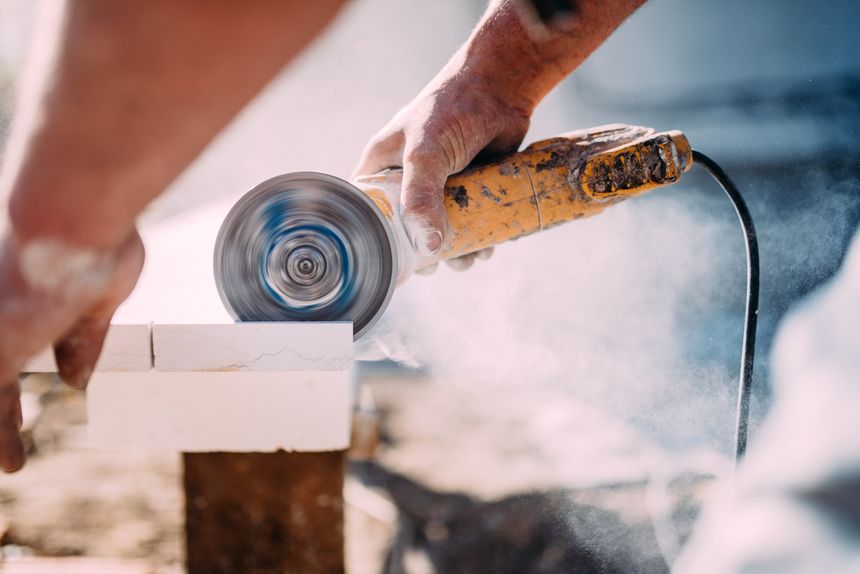
“New Simplified Advice” has been issued by the Health & Safety Executive this week for those who install artificial stone worktops intended for kitchens and bathrooms. The intention is to raise awareness and avoid the risks associated with the inhalation of respirable crystalline silica. The publication is an update on the HSE’s 2013 Guidance, the latest iteration of which is less than 12 months old. So why the need to restate and further simplify that guidance?
Why the Need for New Guidance?
With the recent publication of the 2024 Annual Statistics, the HSE acknowledge that there were 6 cases of artificial stone-caused silicosis reported by the end of 2023.
Dig deep into the report, and you will see that the HSE reference a study published in 2024, led by the team at the Department of Occupational Lung Disease at the Royal Brompton Hospital, which reported 8 further cases involving men with a median age of just 34 years. We don’t yet know how many more cases will come forward, but I understand that there are now nearer to 20 worktop workers who have been diagnosed with silicosis, and there has been at least 1 fatality. The current trend is deeply worrying.
The concentration of silica in these artificial worktops is far greater than the content of traditional, more expensive, granite or marble worktops and it is this fact that is likely to be behind the accelerated progression of this cruel disease.
Australia implemented a ban on the use of, supply and manufacture of engineered stone in July 2024. The ban was extended to the import of that engineered stone, effective from 1st January. You can see my past post on that here.
What Next for the UK?
Is further guidance from the HSE about the dangers of artificial stone enough to tackle the growing problem? The Worktop Fabricators Federation’s stated position (published in August 2024), is that “the danger arises from not following health and safety guidelines when cutting and fabricating” and that it is a “factory management issue”.
There is some merit in the WFF suggestion. The working conditions highlighted by some of those diagnosed with silicosis are frankly appalling. Small workshops with little ventilation, no extraction and with little attempt at dust suppression. In the examples highlighted in recent case studies, it is clear that there was little or no attempt to follow safety guidance, whether or not the employers knew of its existence.
Should the UK government heed the growing number of calls for a UK ban on artificial stone, similar to that introduced in Australia?
The HSE has a continuing and important role as both an educator and enforcer, but it needs both the funds and resources to tackle this growing problem. It has been suggested by some that the current cohort of identified silicosis cases involve only a tiny minority of businesses who are oblivious to, or otherwise ignore, that current guidance. But those dubious working practices appear to have gone unchecked for too long, exposing employees to significant dangers.
The number of silicosis cases continues to be reported and the weight of the call for a ban will undoubtedly grow if the problem is not brought under control.
The Problem is not Isolated to Artificial Stone
The dangers of respirable crystalline silica exposure are not isolated to those who manufacture and fit artificial stone worktops. At Irwin Mitchell, my colleagues and I represent a significant number of individuals who have been exposed in a range of occupations including traditional stonemasonry, quarry and glassworkers and those exposed to sandblasting.
Only this week, we saw another silicosis related story, this time about the Prosecution of a South Yorkshire Stonemasonry firm who were fined following a HSE investigation. The published images suggest a flagrant disregard for the health of the workers involved.
Silicosis is a cruel, insidious disease, with symptoms often arising years after the individual has ceased working with stone. That’s why it’s important to record periods of work involving exposure to silica as soon as possible. Memories fade and businesses close, but a contemporaneous or early record can help. A detailed, personal record should be made and kept safe. The Irwin Mitchell Silica Exposure Register can help with that.
David Johnston-Keay
Irwin Mitchell LLP
January 2025
